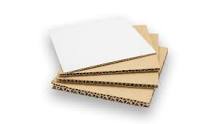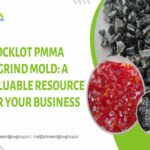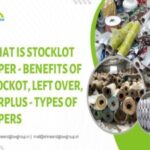Paper board is commonly used in packaging and is known for its versatility, durability, and sustainability. This guide provides an in-depth understanding of paperboard, including its types, packaging, and sheet varieties.
Introduction
Paper board is a versatile and widely used material that plays a significant role in various industries and everyday life. It is a thick, stiff type of paper that is commonly used for packaging, printing, and construction purposes. With its unique properties and eco-friendly nature, paperboard has become a popular choice in numerous applications.

| Topic | Information |
|---|---|
| Introduction | Paperboard is a versatile and widely used material made from paper pulp. |
| Definition of Paperboard | Paperboard is a thick, rigid material with a grammage higher than 224 g/m². |
| Uses of Paperboard | Packaging, graphic design, stationery, construction, education, and crafts. |
| Why Paperboard is Popular | Sustainability, versatility, cost-effectiveness, strength, aesthetic appeal. |
Paper Board HS Code: 48021020
Coated Paperboard HS code: 48109980
Uncoated Paperboard HS Code:
Types of Paper board
| Type of Paperboard | Definition | Characteristics | Uses |
|---|---|---|---|
| Coated Paperboard | Coated paperboard refers to a type of paperboard that has been treated with a coating material, typically a layer of clay or other chemicals, to enhance its surface properties. The coating provides a smooth, glossy finish. | 1. Smooth and glossy surface 2. Enhanced printability 3. Improved resistance to moisture and grease 4. Greater stiffness and strength compared to uncoated paperboard | 1. Packaging for consumer goods (cosmetics, electronics, etc.) 2. Folding cartons 3. Displays and point-of-sale materials |
| Uncoated Paperboard | Uncoated paperboard is a type of paperboard that does not have a surface coating applied to it. It retains the natural texture and appearance of paper. | 1. Natural paper-like appearance 2. Porous surface 3. Good absorption capacity 4. Lower cost compared to coated paperboard | 1. Folding cartons for dry food products 2. File folders and stationery 3. Book covers and binders |
Paper board Images


Packaging
Paperboard packaging includes folding cartons, set-up boxes, and corrugated boxes.
Folding cartons: Tuck-end, reverse tuck-end, straight tuck-end, seal end, and sleeve cartons. They are lightweight and cost-effective but offer limited protection for fragile items.
Set-up boxes: Hinged lid, neck, sliding drawer, shoulder, and round boxes. They provide excellent presentation and durability but have higher costs.
Corrugated boxes: Regular slotted, full-overlap slotted, half-slotted, die-cut, and telescoping boxes. They offer superior protection during transportation but require more storage space and have higher costs.
Paperboard packaging caters to various industries and their packaging needs.
Sheet Varieties of Paper board
Single-Ply Paperboard
Single-ply paperboard is produced using one layer of pulp and is used for creating small and low-weight packaging. It is commonly used for cereal boxes, shoeboxes, and mailing boxes.
Double-Ply Paperboard
Double-ply paperboard is made using two layers of pulp, making it stronger than single-ply paperboard. This type of paperboard is excellent for medium-sized packaging boxes and other general packaging materials.
Triple-Ply Paperboard
Triple-ply paperboard is the strongest type of paperboard, made from three layers of pulp. It is used for creating sturdy and heavy-duty packaging for products like electronics, appliances & gadgets, and shipping boxes.
Conclusion
In conclusion, paperboard packaging encompasses folding cartons, set-up boxes, and corrugated boxes.
Set-up boxes provide a premium packaging option with their sturdy construction and options like a hinged lid, neck, sliding drawer, shoulder, and round boxes.
Corrugated boxes offer superior strength and durability, making them ideal for shipping and storage purposes, with options like regular slotted, full-overlap slotted, half-slotted, die-cut, and telescoping boxes.
Looking ahead, the future outlook for the paperboard packaging industry is promising.
Increasing demand for sustainable packaging solutions as paperboard is recyclable and eco-friendly.
Rising e-commerce activities lead to higher demand for corrugated boxes for shipping purposes.
Evolving consumer preferences towards premium and visually appealing packaging, driving the demand for folding cartons and set-up boxes.
Technological advancements in printing and manufacturing processes, allow for more innovative and customized paperboard packaging solutions.
Overall, the paperboard packaging industry is poised for a positive future, driven by sustainability, e-commerce growth, consumer preferences, and technological advancements.
Frequently Asked Questions
A: Paperboard finds wide applications in packaging, including folding cartons for various consumer goods, set-up boxes for luxury products, and corrugated boxes for shipping and storage purposes. It is also used in the production of displays, point-of-sale materials, book covers, and stationery.
A: The main difference between paper and paperboard lies in their thickness and stiffness. Paper is thinner and more flexible, typically used for writing, printing, and lightweight packaging. Paperboard, on the other hand, is thicker, stiffer, and more durable, making it suitable for packaging boxes and other structural applications.
A: Yes, paperboard is recyclable. It can be collected and processed through recycling programs, contributing to the circular economy. Recycling paperboard helps conserve natural resources, reduce waste sent to landfills, and decrease the environmental impact of the packaging industry.
A: Paperboard packaging offers various printing and finishing options to enhance visual appeal and branding. Common techniques include offset printing, digital printing, foil stamping, embossing, debossing, and matte or glossy finishes. The choice depends on factors such as the desired aesthetic, budget, and specific requirements of the packaging design and branding strategy.
Read also: SBS Board Paper: The Versatile Choice for Packaging and Printing
If you’re in the packaging and printing game, you know that finding the perfect material to safeguard your products while maintaining top-notch quality can be a real challenge. That’s where SBS board paper comes into the picture….. Read More



